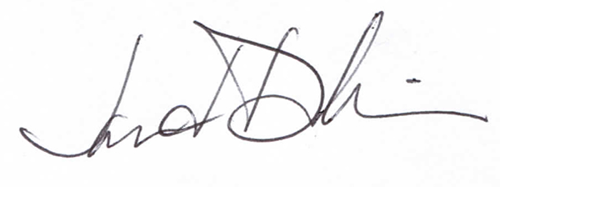Small-Cap Value: Why Now Is the Time
Small-cap stocks have been the market’s forgotten stepchild for over two decades. While investors have been mesmerized by the Magnificent Seven and mega-cap technology stocks, small caps have languished in relative obscurity—neglected, unwanted, and trading at historically cheap valuations.
This neglect has created one of the most compelling asymmetric opportunities in modern market history. The convergence of extreme valuations, shifting economic conditions, and emerging technical signals suggests that small-cap value stocks may be positioned for their most significant outperformance cycle in years.
The Historical Context: Cycles Are Real
Markets operate in cycles, and the current period of large-cap dominance represents an extreme by historical standards.
Check out this market periodic table from Michael Kantro:
Source: Michael Kantro
Large-cap growth has claimed the top-performing factor spot for eight of the past nine years—an unprecedented run that dwarfs previous cycles of large-cap outperformance from the 1970s and late 1990s, which typically lasted 7-10 years before reversing.
This 14-year period of large-cap dominance, accelerating dramatically since 2010, represents the longest such streak in modern market history. The mega-cap growth story thrived in an environment of ultra-low interest rates, where distant future cash flows appeared extraordinarily valuable and technology platforms scaled at unprecedented rates.
However, the structural conditions that supported this dominance are shifting. Interest rates are no longer at zero, making those distant future cash flows worth considerably less today. The law of large numbers is beginning to constrain companies generating more revenue than entire countries. Meanwhile, regulatory pressure on Big Tech continues to mount from multiple directions.
Market periodic data reveals the extent of this dominance—again, large growth has occupied the top-performing position in eight of the last nine years—while small value has anchored the bottom for five of those same years. Such extreme positioning historically precedes significant reversals as trades become increasingly consensus-driven.
The Valuation Disparity Has Reached Extreme Levels
The current valuation gap between small caps and large caps has reached levels not seen since the dot-com bubble of the late 1990s. As of late 2024, the Russell 2000 trades at approximately 14–15X forward earnings, while the S&P 500 sits at nearly 20X—a 30% spread that significantly exceeds the historical average of 10–15%.
The price-to-book ratio tells an even more compelling story. Small caps currently trade at 1.2X book value compared to the S&P 500’s 3.5X multiple. This 2.3X differential matches the extreme valuation gaps witnessed during the height of dot-com mania, when investors paid 100X sales multiples for companies that sold dog food online.
This valuation disparity becomes more striking when considering market concentration.

The top 10 stocks in the S&P 500 now command almost 40% of the index’s market capitalization while generating only about 25% of its earnings. Investors piling into these top names are effectively accepting greater risk for diminished reward—a dynamic that rarely persists indefinitely.
The Flow Data Tells a Story of Extreme Positioning
Perhaps the most compelling aspect of the current setup lies in the flow data. Small-cap stocks are experiencing an $80 billion annual outflow in 2025—the largest exodus in the segment's history.

Source: BofA Global Research
This represents a dramatic acceleration from 2022’s previous record, making that year’s outflows appear modest by comparison.
Simultaneously, investors continue pouring capital into large-cap stocks, with inflows on pace for $419 billion annually—the second-highest on record.

Source: BofA Global Research
This divergence in capital allocation reflects a market where participants have grown comfortable ignoring entire asset classes in favor of familiar mega-cap names.
The extreme nature of these flows suggests that cheap assets have remained cheap while expensive assets have grown even more expensive. Such positioning creates the foundation for significant reversals when market dynamics eventually shift.
The Macro Environment Is Turning Supportive
Multiple macroeconomic factors are aligning to support a potential small-cap renaissance. The Federal Reserve’s future rate cuts represent a particularly important catalyst. Small-cap companies typically carry higher debt loads and greater sensitivity to interest rate changes, making them disproportionate beneficiaries of easier monetary policy.
Lower rates serve multiple functions for smaller companies: They ease balance sheet pressure, make dividend yields more attractive relative to risk-free alternatives, and historically trigger rotations into undervalued sectors. The combination of these factors with the extreme valuation gap between growth and value creates the catalyst this trade has been waiting for.
Pro-domestic policy initiatives also favor smaller companies. Manufacturing reshoring, infrastructure investments, and deregulation efforts tend to benefit domestic-focused firms more than global giants. Small caps, with their typically regional or national footprints, stand to gain disproportionately from these trends.
The Technical Picture Is Beginning to Shift
Technical analysis reveals early signs of an inflection point. The ratio of small caps (IWM) to large caps (IWB) recently bounced off a two-decade support zone and broke to five-month highs.

Source: J.C. Parets
After years of relentless underperformance, this technical development suggests the tide may finally be turning.
The Russell 2000’s 7% gain in August 2025 marked its best performance relative to the S&P 500 in over a year. This wasn't driven by retail speculation or meme stock enthusiasm—it represented institutional reallocations as professional investors began positioning for a potential rotation.
Despite remaining approximately 20% below its 2021 peak, the Russell 2000 has begun showing signs of life. The index’s underperformance relative to the S&P 500 by nearly 12% over the past 18 months has created a coiled spring effect that history suggests investors shouldn’t ignroe.
Smart Money Is Starting to Take Notice
Professional investors and strategists are beginning to acknowledge the opportunity. Francis Gannon of Royce Investment Partners recently described a “stealth summer” for small caps, highlighting industrials, financials, and healthcare as potential leadership groups. RBC’s Lori Calvasina notes that the Russell 2000 “matters again”—significant commentary from a major Wall Street strategist.
Keith Lerner at Truist upgraded small caps to “neutral,” which on Wall Street is code for “I don’t want to miss this, but I’m hedging my words.” Bank of America has grown constructive on small regional banks, a development that typically occurs only when valuations reach bombed-out levels and risk/reward dynamics turn favorable.
These shifting professional opinions, combined with the institutional flow data, suggest that the smart money is beginning to position for a rotation before it becomes widely recognized.
The Value Component: Quality at Reasonable Prices
Within the small-cap universe, value stocks present particularly compelling opportunities. For over a decade, markets have been addicted to growth, with every investment dollar chasing innovation, disruption, and “story” stocks. This addiction has reached chronic stages where margins are compressing and concentration risk is flashing warning signals.
Value investing’s core principles—buying quality businesses at reasonable prices, demanding competitive moats, insisting on fortress balance sheets, and refusing to overpay—have been dismissed as antiquated. Yet these same principles provide essential protection in an environment where investors have grown comfortable paying 25, 30, or even 40X earnings for growth.
The discipline of value investing becomes particularly relevant when considering small-cap stocks. The Russell 2000 index contains numerous failing biotechs and zombie companies, making broad-based index investing problematic. Success in small-cap value requires careful stock selection, identifying profitable, growing businesses with sustainable competitive advantages trading at significant discounts to intrinsic value.
Companies that pass rigorous fundamental screens—operating in stable industries, possessing economic moats, maintaining strong balance sheets, and trading at compelling valuations—offer the potential for significant outperformance when market cycles eventually turn.
Why This Time Could Be Different (in Favor of Value)
Market commentators often invoke the phrase “this time is different” to justify extended valuations and ignore traditional metrics. However, the current environment suggests that this time might actually be different—in favor of value investors who have patiently waited for their opportunity.
Value stocks aren’t merely cheap; they’re systematically under-owned. Investors have been conditioned to view value as “dead money” or “boring” investments. Yet this perceived boringness often translates to resilience—companies generating real cash flows that don’t require constant access to capital markets for survival.
Lower interest rates make dividends more attractive, ease balance sheet pressures, and historically catalyze rotations into undervalued sectors. Value companies, with their durable competitive moats and typically modest leverage, are positioned to protect capital on the downside while compounding steadily over time.
In a world that has grown intoxicated with growth, the discipline to insist on fundamentals, demand durability, and refuse to overpay represents not just contrarian thinking but a genuine edge.
The Asymmetric Opportunity
The convergence of extreme valuations, supportive macro conditions, emerging technical signals, and shifting professional sentiment creates what appears to be an asymmetric opportunity. Small-cap value stocks are historically cheap, which limits their downside potential while providing substantial upside when cycles eventually turn.
The potential rewards significantly outweigh the risks. Even if economic weakness persists or growth somehow reignites, small caps’ current valuations provide a margin of safety that expensive mega-cap stocks cannot offer. The setup represents the kind of opportunity that emerges perhaps once per decade—when multiple factors align to create conditions for exceptional returns.
Conclusion: Positioning Before the Crowd
The whispers about small caps have begun among professional investors and strategists. Technical indicators are showing early signs of improvement. Macro conditions are becoming increasingly supportive. Yet retail investors continue fleeing the asset class in record numbers, creating the exact conditions that presage significant outperformance.
History demonstrates that market rotations begin quietly before accelerating rapidly. The signals are converging from multiple corners of the market, suggesting that breadth may finally be returning to equity markets. Small caps are cheap, continued Federal Reserve easing doesn’t look the least bit farfetched, market leadership is dangerously narrow, and merger activity is warming.
The only question facing investors is whether they’ll position themselves before the opportunity becomes widely recognized, or whether they’ll chase the trade after it has already moved. The setup is present, the valuations are extreme, and the cycle appears ready to turn.
In markets, timing isn’t everything—but it does matter. And for small-cap value stocks, that timing appears to be now.
Keep Following the Small-Cap Story
If you found this analysis helpful, keep up with Jared’s ongoing research in The Jared Dillian Letter. Each week, he shares his latest market insights, trade ideas, and updates on how the small-cap story is developing.

Jared Dillian, MFA

